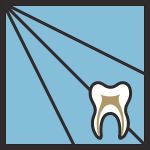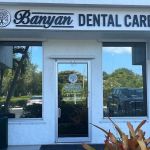What to Do If Your Tooth Hurts When Chewing: A Guide to Understanding and Relieving Tooth Pain
- Understanding Why Your Tooth Hurts When Chewing
- Common Causes of Tooth Pain When Chewing
- How to Relieve Tooth Pain When Chewing
- When to See a Dentist for Chewing Pain
- Real-Life Experience: A Case of Tooth Pain While Chewing
1. Understanding Why Your Tooth Hurts When Chewing
If you've ever experienced tooth pain while chewing, you know how uncomfortable and concerning it can be. Toothaches, especially those that occur when you chew, are often caused by underlying dental issues that need attention. But why exactly does chewing trigger pain in your tooth? The pressure from chewing can aggravate an already inflamed or damaged tooth, which can lead to sharp or dull pain. Understanding the root cause of the pain is key to managing and treating it effectively.
When you chew, your teeth and gums endure increased pressure. If there is an issue such as tooth decay, gum disease, a cracked tooth, or even an old filling that has failed, this pressure can exacerbate the pain. The pain may also be caused by underlying conditions like tooth sensitivity, or it may indicate something more serious, such as an infection or abscess. Knowing what to look for and how to address the problem can help you find relief quickly and prevent further damage.
2. Common Causes of Tooth Pain When Chewing
There are several potential causes of tooth pain when chewing. Let’s explore the most common ones:
2.1 Tooth Decay
Tooth decay, or cavities, is one of the leading causes of tooth pain. If you have a cavity that has reached the pulp of the tooth, the soft tissue inside, chewing can cause the nerves to become irritated, leading to sharp pain. In the early stages, cavities may not cause any pain, but as they progress, they can lead to significant discomfort, especially when pressure is applied during chewing.
2.2 Cracked or Fractured Tooth
A cracked or fractured tooth can cause intermittent or consistent pain, especially when chewing. Even small cracks that may not be visible to the naked eye can cause pain due to the pressure of chewing. The crack can expose the sensitive interior of the tooth, leading to inflammation and discomfort. Cracks may also be worsened by chewing on hard foods, like ice or nuts.
2.3 Tooth Sensitivity
Tooth sensitivity is a condition that affects many individuals, causing discomfort when eating hot, cold, sweet, or acidic foods, as well as when chewing. This condition occurs when the enamel on your teeth wears down or the gums recede, exposing the dentin underneath. This can make the teeth more sensitive to pressure, temperature changes, and certain foods, leading to pain when chewing.
2.4 Gum Disease
Gum disease, or gingivitis, is another common cause of tooth pain. When the gums become infected or inflamed, they can cause pain and sensitivity when chewing. In more advanced stages of gum disease (periodontitis), the gums may recede, and the supporting structures of the teeth may be compromised, leading to increased tooth sensitivity and pain when chewing.
2.5 Failed Fillings or Restorations
If you have dental fillings or other restorations, such as crowns, they can sometimes fail. When this happens, the tooth beneath the filling can become exposed to pressure, causing pain when chewing. Fillings may also become loose or cracked over time, which can cause discomfort as well.
3. How to Relieve Tooth Pain When Chewing
There are several steps you can take to alleviate tooth pain while chewing, though it's important to note that these are temporary measures. The most effective solution is to visit a dentist for a professional evaluation and treatment. However, here are some things you can do at home to manage the pain:
3.1 Use Over-the-Counter Pain Relievers
Non-prescription pain relievers, such as ibuprofen or acetaminophen, can provide temporary relief from tooth pain. Be sure to follow the recommended dosage on the label, and consult with your healthcare provider if you have any underlying conditions or concerns about using these medications.
3.2 Apply a Cold Compress
A cold compress applied to the outside of your cheek can help reduce inflammation and numb the pain in the affected tooth. Be sure to wrap the ice pack in a towel to avoid direct contact with your skin, and apply the compress for 15-20 minutes at a time.
3.3 Rinse with Warm Saltwater
Rinsing your mouth with warm saltwater can help reduce inflammation and kill bacteria in the mouth. Saltwater rinses are especially helpful if you have gum disease or if the pain is caused by an infection or abscess. Simply dissolve a teaspoon of salt in warm water and swish it around your mouth for 30 seconds.
3.4 Avoid Chewing on the Affected Side
If your tooth hurts when chewing, try to avoid putting pressure on the affected side of your mouth. Eating soft foods that require minimal chewing can also help reduce discomfort. Avoid extremely hot, cold, or acidic foods, as these can aggravate tooth sensitivity and increase pain.
3.5 Use Desensitizing Toothpaste
If your tooth pain is caused by sensitivity, consider switching to a desensitizing toothpaste. These types of toothpastes contain compounds that help block the pathways to the nerves inside your teeth, providing relief from sensitivity. It may take several applications to notice a reduction in pain, so be patient.
4. When to See a Dentist for Chewing Pain
While some tooth pain may resolve on its own, it’s important to see a dentist if the pain persists or worsens. Here are some signs that you should seek professional dental care:
- If the pain lasts more than a few days.
- If the pain is severe or throbbing.
- If there is visible swelling, pus, or a bad taste in the mouth.
- If you notice a cracked or broken tooth.
- If the pain is accompanied by fever or other symptoms of infection.
A dentist can properly diagnose the cause of the pain and recommend appropriate treatments, which may include fillings, crowns, root canal therapy, or other procedures to address the underlying issue.
5. Real-Life Experience: A Case of Tooth Pain While Chewing
John, a 34-year-old man, began experiencing pain in his lower molar every time he chewed. The pain was sharp and intense, especially when he bit into hard foods like apples or nuts. After trying over-the-counter pain relievers with little relief, John went to his dentist, who discovered that he had a cracked tooth. The crack had exposed the tooth’s pulp, causing the pain he was feeling when chewing. John’s dentist recommended a root canal and a crown to fix the tooth, which ultimately provided relief from the pain.
If you’re dealing with tooth pain, it’s important to get the proper treatment to address the root cause of the issue and prevent further complications. For more information on managing tooth pain or to schedule a consultation, visit Dentistry Toothtruth for expert advice and care.







 Wiemeyer Dentistry5.0 (124 review)
Wiemeyer Dentistry5.0 (124 review) West Coast Dental of Van Nuys4.0 (318 review)
West Coast Dental of Van Nuys4.0 (318 review) Sunnymead Village Dental Group4.0 (65 review)
Sunnymead Village Dental Group4.0 (65 review) Dental365 - Bellmore4.0 (318 review)
Dental365 - Bellmore4.0 (318 review) Central Pennsylvania Endodontics, LLC5.0 (241 review)
Central Pennsylvania Endodontics, LLC5.0 (241 review) Banyan Dental Care4.0 (90 review)
Banyan Dental Care4.0 (90 review) The Importance of Oral Health Education During Pregnancy for a Healthy Pregnancy
The Importance of Oral Health Education During Pregnancy for a Healthy Pregnancy Best Tips for Brushing Your Teeth Properly for Healthy Gums: Essential Techniques for Oral Health
Best Tips for Brushing Your Teeth Properly for Healthy Gums: Essential Techniques for Oral Health Why Skipping Dental Checkups Can Lead to Bigger Oral Health Problems
Why Skipping Dental Checkups Can Lead to Bigger Oral Health Problems Advantages of Porcelain Dental Restorations
Advantages of Porcelain Dental Restorations How Can Diabetes Cause Tooth and Gum Problems? Preventing and Managing Oral Health Issues
How Can Diabetes Cause Tooth and Gum Problems? Preventing and Managing Oral Health Issues Healthy Habits for Promoting Good Oral Health and Hygiene: Tips for a Healthy Smile
Healthy Habits for Promoting Good Oral Health and Hygiene: Tips for a Healthy Smile